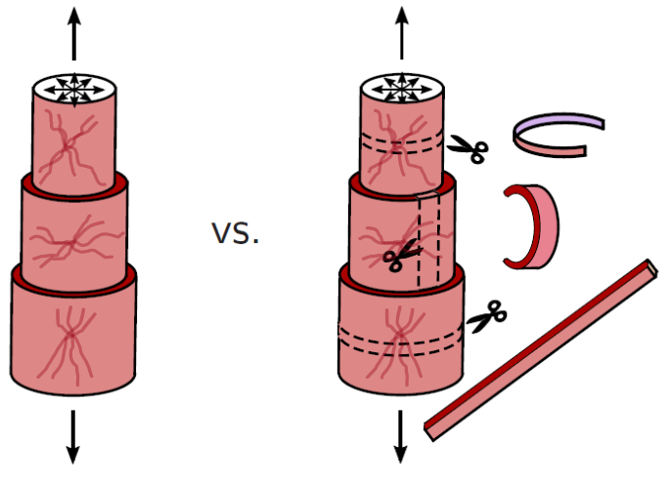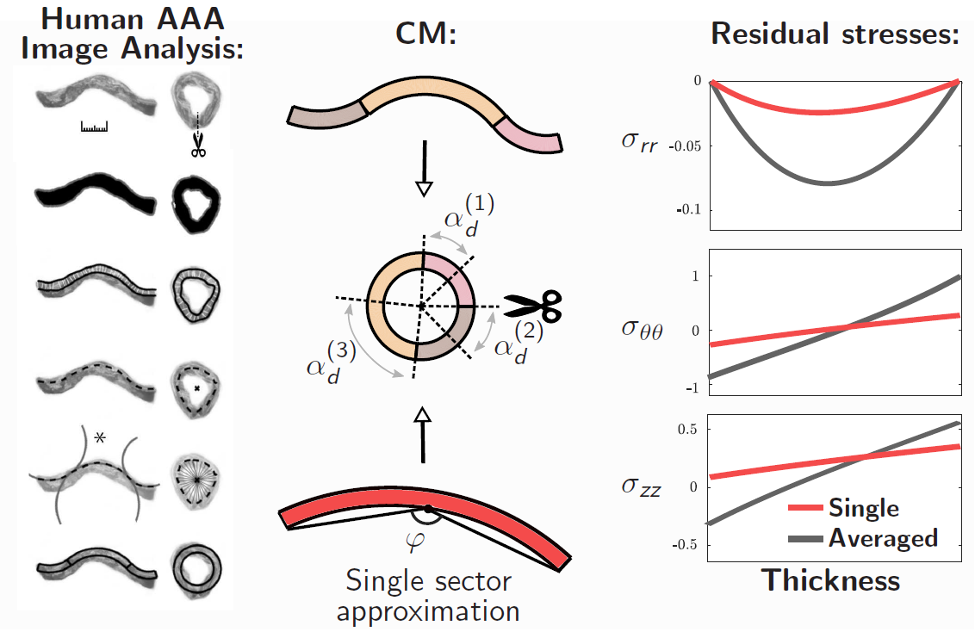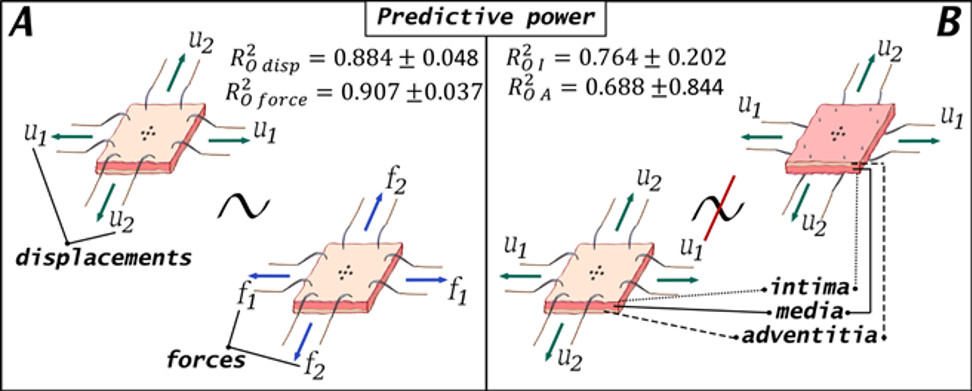
A More Accurate Estimation of Residual Stresses
Should residual stresses be modelled as anisotropic phenomenon?
If residual stresses reduce the gradient of transmural stresses in the one-layer model of the aorta, what would be the effect of the residual stresses in the case of a multilayered model of the aorta?
There is still a debate on whether the residual stresses should be modelled accounting for anisotropy of the material or not. Among arguments to include anisotropic effects: 1) residual deformations are not always small and significant bending effects can be observed; 2) elastin is associated with small strains but purified elastin tissues are anisotropic; 3) it is not always possible to extract isotropic behavior from the strain energy density and reported material parameters. In this project, on an example of the strain energy density represented by isotropic and anisotropic term, we show how much of residual stress is neglected if the anisotropic term is omitted. Since seemingly small residual stresses are known to reduce the gradient of relatively large transmural stresses, underestimation of residual stresses might affect our understanding of in-vivo stresses.
Residual stresses do lessen the gradient of transmural stresses in the one-layer model of the aorta. However, the aorta is the multilayered structure; its layers have different functions and distinct residual, mechanical and microstructural properties. In this study we investigate the effect of the residual stress on the in-vivo model accounting for both anisotropic and layered nature of aorta. We show, that if the residual stresses are not included into the model, the intima layer carries all the load when the aorta is inflated and axially extended, which is irrational from the physiological point of view. However, when residual stresses of individual layers are considered, all the stress is transferred to the media layer; and it corresponds to the common understanding of the fact that the media is the main load-bearing layer. Therefore, from the modelling point of view, residual stresses optimize the stress distribution in the loaded aorta to achieve better functionality.

Loaded anisotropic aortic layers without and with residual effects
Can the opening angle method be adapted to geometrically irregular aortas?
One can use a very rough approximation to determine analytical residual stress for aortic rings with asymmetric openings. However, we believe that, in this case, residual stresses will be underestimated. We suggest a multisector approximation approach in which opened rings can be digitally split into multiple sectors, the corresponding residual stresses can be calculated for individual sectors and then averaged. This approach can be further enhanced and utilized to measure residual stress in a range of pathologically affected tissues such as aortic aneurysms, calcified blood vessels or blood vessels with plaques.

Asymmetric opening treated by multi-sector approximation method using averaging and by single sector approximation method
Performing biaxial tests on heterogeneous biological tissue.
Does the mechanical testing protocol influence results? And what about the specimen’s side?
Generally, biaxial testing is conducted ether in force-controlled or displacement-controlled regimes. However, the difference between these loading protocols have not been investigated in the literature. We demonstrate that the observed mechanical response is the same for both protocols (Fig. A). This is an important result since often researchers do not have time and resources (both financial and experimental) to analyze the effect of loading protocols.
Also, it is not commonly reported what side of biological tissues is used for optical strain measurements in biaxial experiments. The assumption states that the deformation in the central region of tissue specimen is homogeneous through the thickness. We challenge the validity of this assumption by demonstrating that the observed mechanical response of porcine aorta is different depending on whether the luminal side (media & intima) or the abluminal side (adventitia) is used for optical strain measurements (Fig. B). This is an important finding that has to be accounted for when modelling in-vivo behaviour and has to be further investigated.

It was found that the loading protocol does not substantially affect the constitutive response (A), while the surface orientation does (B).
